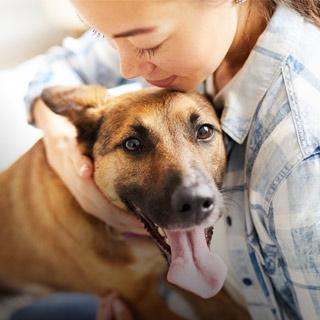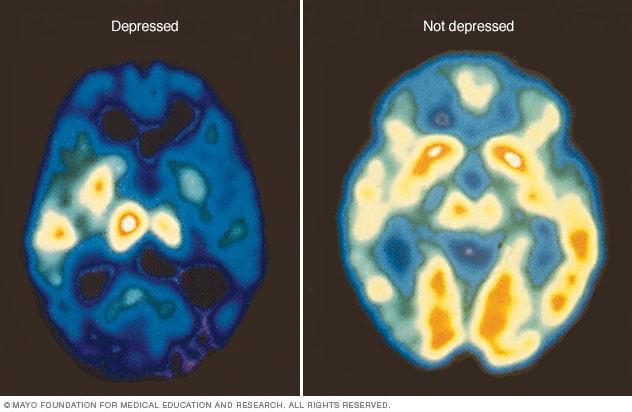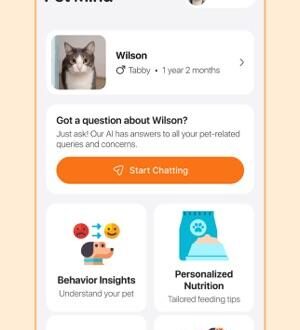
Understanding Pet Depression: Signs to Watch and Ways to Help
In the quiet moments between playful barks and the gentle purring of contentment, a hidden struggle may lurk beneath the surface of our beloved pets. Just like us, dogs, cats, and other furry companions can experience emotional highs and lows, thier feelings often going unnoticed in the bustling rhythm of everyday life.As guardians of these loyal friends, it’s essential for us to recognize the subtle signs of pet depression and understand the profound impact our care can have on their well-being. In this article, we will explore the telltale indicators that may suggest your pet is feeling down, and also practical strategies to rejuvenate their spirits and strengthen the bond you share. Join us on this journey to foster a happier, healthier environment for our cherished companions, where their tails can wag and hearts can soar once more.
Table of Contents
- Recognizing the Subtle Signs of Pet Depression
- Exploring the Emotional Landscape of Our Animal Companions
- Practical Strategies to Support a Depressed Pet
- Creating an Enriching Environment for Healing and Happiness
- Future Outlook

Recognizing the Subtle Signs of Pet Depression
Pet depression can often go unnoticed, as our furry companions may not express their sadness as overtly as humans. However, there are subtle cues that can indicate your pet may be struggling with their emotional well-being. Watch for changes in their behavior, such as withdrawal from activities they once enjoyed, like playtime or walks. Additionally, a noticeable reduction in appetite or sudden weight loss can signal distress. Other signs to recognize include an increased reluctance to interact with family members and a general lack of enthusiasm, which can manifest in lethargy or sleeping more than usual.
It’s essential to pay attention to your pet’s vocalizations and body language as well.Excessive whining, barking, or meowing might suggest they’re feeling anxious or unwell, while an unkempt coat could indicate neglect of self-grooming due to low energy or motivation. If you’re noticing any of the following signs, it might potentially be time to seek professional guidance:
- Changes in Eating Habits: Sudden weight gain or loss can be a red flag.
- Altered Sleep Patterns: Sleeping excessively or restlessness during the night.
- Increased Destructive Behavior: Chewing on furniture or excessive barking can stem from discomfort.
- Loss of Interest in Activities: Not wanting to play with toys or engage with their favorite games.
| Behavioral Change | Potential Indicator |
|---|---|
| Withdrawal | Depression or anxiety |
| Vocalization Changes | Stress or discomfort |
| Grooming Issues | Lack of energy or motivation |

exploring the Emotional Landscape of Our Animal Companions
Our cherished animal companions are more than just pets; they are members of our families, often reflecting and responding to our emotional states. This deep bond can lead to psychological complexities, including depression in pets, which can be just as real and impactful as in humans. Signs of depression in pets can manifest in various ways, making it essential for owners to pay close attention to behavioral changes. Some common indicators include:
- Withdrawal from social interaction: A previously playful dog might become distant, avoiding both people and other animals.
- Changes in appetite: Loss of interest in food or persistent overeating can signal emotional distress.
- excessive sleeping: While pets do need plenty of rest, a notable increase in sleep can be a concerning sign.
- Destructive behavior: Pets may chew or scratch furniture as a form of coping with their unease or boredom.
Recognizing these signs is just the beginning; there are effective strategies to support our furry friends through their emotional struggles. Providing a stable routine and increasing physical activity are vital components. Activities that engage their mind and body not only reduce stress but also help restore their sense of happiness. consider the following approaches to nurture your pet’s emotional well-being:
- Interactive toys: Puzzle toys can stimulate mental engagement, keeping their minds sharp and active.
- Regular exercise: Daily walks or play sessions can help release pent-up energy and elevate mood levels.
- Quality time: simply spending focused time with your pet can reinforce your bond and help alleviate their anxiety.
- Consulting professionals: Sometimes, involving a veterinarian or animal behaviorist might be necessary for tailored support.

Practical Strategies to Support a Depressed Pet
When it comes to supporting a pet that may be struggling with depression, implementing simple yet effective strategies can make a significant difference in their overall well-being. Establishing a routine is crucial; pets thrive on predictability. Try to maintain a consistent schedule for feeding, walks, and playtime to create a sense of security for your pet. Additionally, encouraging physical activity is essential, as exercise releases endorphins that can improve mood. Consider engaging in fun activities like fetch or exploring new walking trails to stimulate their interest and energy levels.
Moreover, nurturing your pet’s mental health can help alleviate symptoms of depression. Interactive toys and puzzles can keep their minds engaged, while regular socialization with other pets or humans can foster a sense of community and joy. You might also think about incorporating relaxation techniques into their routine, such as gentle massage or quiet time in a cozy space. To monitor changes in your pet’s behavior, consider using the following table to track activities and mood shifts:
| Activity | Mood rating (1-5) | Notes |
|---|---|---|
| Walk in the park | 4 | Showed enthusiasm; wagged tail. |
| Play with interactive toy | 5 | Engaged for over 30 minutes. |
| Quiet cuddle time | 3 | Relaxed but didn’t initiate. |

Creating an Enriching Environment for Healing and Happiness
creating a space where your pet can thrive emotionally and physically is crucial in combating feelings of depression. consider these environmental modifications that enhance their well-being:
- Comfortable Sleeping Area: Ensure they have a warm, quiet space with their favorite blankets or toys.
- Interactive Toys: invest in stimulating toys that can engage their mind and provide entertainment.
- Regular Exercise Zones: designate areas for play and exploration, encouraging daily exercise that promotes mental health.
- Natural Elements: Incorporate plants or a small window view where they can observe the outdoors, connecting them with nature.
Additionally, fostering social interaction is vital for your pet’s emotional well-being. Engaging in regular playtime, socializing with other pets, or participating in pet-kind community events can significantly boost their mood. Here’s a simple table highlighting activities that can enhance emotional connections:
| Activity | Benefits |
|---|---|
| Daily Walks | Stimulates physical health and provides a change of scenery. |
| Playdates | Encourages socialization and play, reducing loneliness. |
| Training Sessions | Strengthens bonds through interaction and engagement. |
| Relaxing Massage | Increases connection and reduces anxiety through touch. |
Future Outlook
As we draw the curtain on our exploration of pet depression, it becomes abundantly clear that our furry companions experience a spectrum of emotions just as we do. By recognizing the subtle signs of their discontent—be it a decreased appetite, withdrawal from play, or an unusual lethargy—we can take the first steps toward providing the support they need.
Understanding pet depression not only fosters a deeper connection with our pets but also empowers us to create an environment that nurtures their mental well-being. From enriching their daily routines to seeking professional help when necessary, every action we take can pave the way for brighter days ahead.
As you embark on this journey of care and compassion, remember that your pet’s happiness is intertwined with yours.By opening your heart and mind to their emotional needs, you not only champion their mental health but also cultivate a flourishing bond.Let us commit to being vigilant companions, always ready to lend an ear, a playmate’s paw, or a gentle nudge towards healing. together, we can ensure that our pets lead lives filled with joy, love, and fulfillment.





